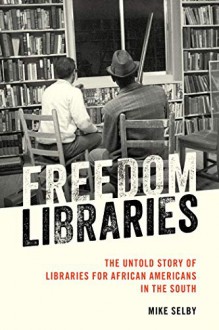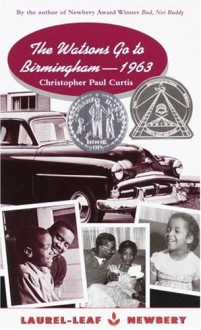
I thank NetGalley and Little, Brown Book Group UK for providing me an ARC copy of this book, which I freely chose to review.
In brief, this is an extraordinary book. Beautifully written, haunting, it vividly portrays and era and a place (the early 1960s in Florida), and illustrates the very best and the very worst of human beings and their behaviour. Although everybody should know about the true story this book is inspired by, my only hesitation in recommending this book to all is that it is a tough read, and one that could upset people who have experienced abuse or violence or prefer not to read graphic accounts of those topics. (It is not extreme, in any way, in its depiction of violence and abuse, and much is left to the imagination of the reader rather than being unnecessarily and openly graphic, but then, my level of tolerance is quite high, so it might not be an indication of other readers’ opinion. On the other hand, it is emotionally harrowing, as it should be).
I had not read any of Whitehead’s books before but had heard and read many comments about his recent success with The Underground Railroad, and was keen to see what he would write next. Although I can’t compare the two, based on how much I have enjoyed this story and the style of writing, I am eager to catch up on the author’s previous novels.
I went into this book not having read reviews or detailed comments about it, other than the short description on NetGalley, and I was quickly drawn into the story. After the brief prologue, that sets up the scene and introduces what will become the main setting (and a protagonist in its own right) of the story, The Nickel Academy (previously, The Florida Industrial School for Boys, created in 1899, a reform school in serious need of reforms), we get to meet the two protagonists, first Elwood Curtis, an upstanding boy, determined to make his grandmother proud, a firm believer in Martin Luther King’s philosophy and speeches, a hard student and worker, and later Jack Turner, a boy with a more difficult background whom we meet during his second stay at Nickel. The interaction between the boys, the differences between them, the unlikely friendship that develops, and the ways their lives influence each other, not always evident as we read it, form the backbone of this novel, whose action is set mostly in a momentous era, the 1960s, and with the background of the Civil Rights Movement at its heart. Elwood’s determination to follow King’s dictates is sorely put to the test at Nickel, but he does learn much about himself and about the world there, including some things that should never happen to anybody, no matter their age or colour. Turner, a survivor who has been exposed to a much harsher reality than Elwood from the beginning, learns a new set of values and much more.
As I mentioned above, the story, narrated in the third person but mostly from the point of view of the two main characters (the novel is divided into different parts, and it is clearly indicated which point of view we are sharing), is beautifully written. It lyrically captures the nuances of the period and the place, using a richly descriptive style of writing that makes us feel as if we were there, experiencing the oppressive heat, the excitement of being a young boy going in his first adventure, the thrill of joining a heartfelt protest, the fear of Nickel, the dashed hopes… And later, we also touch base with the main character’s life at different points after Nickel, including the present, when he hears about the unearthing of the story, and we realise that, for him, it’s never gone away; it’s never become the past. The author intersperses the words of Martin Luther King Jr.’s speeches, of James Baldwin’s stories, and, as he explains in the Acknowledgements’ section at the end, he also quotes from real life accounts from survivors of the Dozier School for Boys in Marianna, Florida, whose story inspired the setting and much of the story this book narrates. Although I didn’t know the story was based on a real place, I kept wondering about it as I read —it felt true, for sure—, and I was not surprised when my suspicions were unfortunately confirmed at the end. (The author provides plenty of links and information about the real story of Dozier and also includes a bibliography of the other sources he has used, which will prove invaluable to researchers and readers eager to find out more). The author’s use of quotes adds to the true feel of the novel while establishing a clear connection between this story and the troubled history of race (and to a slightly lesser extent class) relations in the USA. Although based on a real reform school, Nickel is a microcosm, a metaphor for the abuse and corruption that has marred not only the United States but many other countries, and a reminder that we must remain vigilant, as some things and behaviours refuse to remain buried and keep rearing their ugly heads in more ways than one. I, for one, will not hear talk about the White House and not think about quite a different place from now on.
The characters are compelling, easy to empathise with, and one can’t help but root for these young men who find themselves in impossible circumstances. Some are complicit in the abuse, some mere victims, but most are just trying to survive. As for the perpetrators… There’s no attempt at explaining why or how it happened. This is not their story. Their story has been the official History for far too long.
Apart from all I’ve said, there’s quite a twist towards the end of the story, which casts a new light on some of the events and on the relationship between the two boys, clarifying some questions that are left answered as the story progresses. This is not a mystery or a thriller as such, but the twist introduces an element of surprise that, at least for me, increased the power of the narrative and the overall effect of the story. The compelling plot of the novel is perfectly matched by the masterly way it is told.
I highlighted a lot of passages from the novel, but I thought I’d share the opening, and another paragraph from the preamble, to give you a taster. (As I mentioned, mine is an ARC copy, so there might be some changes to the final published version).
Even in death the boys were trouble. (A fantastic opening line that will become one of my favourites from now on).
When they found the secret graveyard, he knew he’d have to return. The clutch of cedars over the TV reporter’s shoulder brought back the heat on his skin, the screech of the dry flies. It wasn’t far off at all. Never will be.
A great novel, inspiring, appalling, tough, lyrical, fitting homage to the victims of a corrupt, merciless, and racist institution, and an indictment of the society that allowed it to exist. Highly recommended, with the only reservations mentioned above about the subject matter.

 Log in with Facebook
Log in with Facebook 








